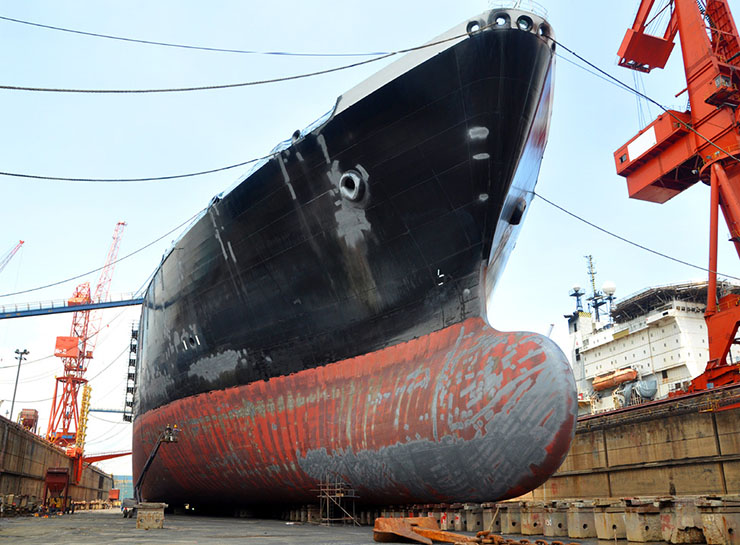ARCHIVED – Canada’s Role in the Global LNG Market – Energy Market Assessment
This page has been archived on the Web
Information identified as archived is provided for reference, research or recordkeeping purposes. It is not subject to the Government of Canada Web Standards and has not been altered or updated since it was archived. Please contact us to request a format other than those available.
Looking Ahead for Canada’s LNG Industry
While many LNG export licences have been granted in Canada, not all of the projects will go ahead. Canada is a late entrant into a global LNG export market that is becoming increasingly competitive as more facilities are built around the world. The following is a summary of Canada’s competitive advantages and disadvantages in the world LNG market.
Advantages
- Canadian west coast projects have a proximity advantage to prolific gas supply from shale and tight gas resources in western Canada (such as the Montney, Deep Basin, and Horn River plays), which represent over 50% of Canada’s current production.
- The most competitive of these gas plays supply relatively low cost production, which helps improve the economics of LNG trade from Canada versus some international LNG projects with higher cost gas supply (e.g. offshore deep water gas basins).
- Canadian west coast projects are closer to prime Asian markets than existing U.S. facilities in the Gulf Coast/East Coast region by about 5 000 nautical miles and do not require passage through the Panama CanalFootnote 7. This proximity to Asia is a key advantage over U.S. Gulf Coast-based LNG project offerings. Canada is also about 1 000 nautical miles closer to Asia than significant west African liquefaction players like Nigeria.
- Canadian east coast projects are closer to European import markets than the U.S. Gulf Coast (by 2 000 nautical miles) and other leading international LNG exporters such as Australia, Qatar, and Malaysia.
- LNG facility tax incentives in Canada provide a significant financial advantage.
Challenges
- Historically low global natural gas prices and ample supply in key natural gas markets make it challenging for Canadian LNG projects to secure long-term contracts. The current market environment is trending towards short-term or spot price-based transactions that generally make it more difficult to finance multi-billion dollar investments in new LNG facilities.
- Most proposed Canadian LNG projects would rely on inland supply sources in northeast B.C. and Alberta. This would require major new long haul pipelines or expansions of existing systems to transport natural gas to coastal liquefaction facilities – a major additional project expense and that also requires regulatory approvals. In contrast, many other global LNG supply regions, including Australia, use offshore gas as their major supply source.
- Canadian LNG projects would generally be greenfield sites and incur higher costs than U.S. projects built on existing LNG import terminal sites.
- There are growing public concerns over competing uses for land and marine resources, local impacts from hydraulic fracturing, pipeline routing, safety, and GHG emissions, among other issues. As a result, the regulatory environment continues to evolve and could impact future LNG project-related approvals.
- Australia and other Asia-Pacific LNG supply regions such as Malaysia and Indonesia are closer to the prime Asian market.Footnote 8 These competing regions have significant shipping time and cost advantages over Canadian projects.
- Competition is increasing; some U.S. LNG export facilities have already begun operations while many others are progressing to a final investment decision and will be in full operation before most Canadian projects. Other fiscally stable regions such as Australia also have many operating facilities.
Uncertainties
- Canada has the opportunity to become an LNG exporter before U.S. west coast projects. At this point, no U.S. west coast project has reached a final investment decision.
- Future global natural gas and LNG contracting and pricing is an area of uncertainty that will dramatically impact global LNG project economics.
- The role of natural gas in addressing global climate change concerns is uncertain in the coming decade(s). Natural gas and LNG demand may strengthen as economies become less reliant on more carbon-intensive fossil fuels such as oil and coal. Alternatively, natural gas and LNG demand could decline if renewable and/or nuclear energy sources become more prevalent at the expense of all fossil fuels.
- Many global LNG projects under development are competing for available labour, expertise, and materials and could face inflated development costs. Canadian project proponents are concerned about cost over-runs observed in other global projects.

- Date modified:
